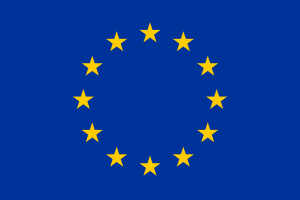 The European Union has announced plans to force device manufacturers to fit a common USB-C charging port on their devices. The proposal is likely to have the biggest impact on Apple, which continues to use its proprietary Lightning connector rather than the USB-C connector adopted by most of its competitors.
The European Union has announced plans to force device manufacturers to fit a common USB-C charging port on their devices. The proposal is likely to have the biggest impact on Apple, which continues to use its proprietary Lightning connector rather than the USB-C connector adopted by most of its competitors.
The new iPad pro HAS a USB-C connector and no lightning connector – perhaps a sign Apple saw this coming.
The proposals only cover devices using wired, not wireless, chargers. A spokesperson confirmed that a USB-C port is only mandatory for devices that charge using a cable. But, if a device charges exclusively via wireless, there’d be no requirement for a USB-C charging port. In addition, customers will be able to buy new devices without an included charger.
The rules will apply to other devices like tablets, headphones, portable speakers, videogame consoles, and cameras. Manufacturers will also be forced to make their fast-charging standards interoperable, and to provide information to customers about what charging standards their device supports.
To become law, the proposal will need to pass a vote in the European Parliament. Then, if adopted, manufacturers will have 2 years (24 months) to comply with the new rules.
“Chargers power all our most essential electronic devices. With more and more devices, more and more chargers are sold that are not interchangeable or not necessary. We are putting an end to that,” said commissioner Thierry Breton. “With our proposal, European consumers will be able to use a single charger for all their portable electronics – an important step to increase convenience and reduce waste.”
The proposals follow a vote in the European Parliament in January 2020 when lawmakers voted for new rules on common chargers. As of 2016, the amount of electronic waste produced across the bloc amounted to around 12.3 million metric tons.
As of 2018, around 29% of phone chargers sold in the EU used USB-C, 21% used Lightning, and around half used the older Micro USB standard.
In 2009, when Apple, Samsung, Huawei, and Nokia signed a voluntary agreement to use a common standard – in the EU. Since then, the industry adopted Micro USB and, more recently, USB-C as a common charging port.
Apple never included a Micro USB port on its phones directly. Instead, it offered a Micro USB to 30-pin adapter.
Apple (of course) disagreed with today’s proposals in a statement.
“We remain concerned that strict regulation mandating just one type of connector stifles innovation rather than encouraging it, which in turn will harm consumers in Europe and around the world,” a spokesperson from the company told Reuters.
While European lawmakers focus mainly on wired chargers, wireless charging is becoming increasingly popular across smartphones and has largely converged on a single cross-platform standard: Qi. There have even been rumors that Apple could ship an iPhone without a Lightning port and have it rely entirely on wireless charging for power.
—| NWIDA members, contact us today if you need our assistance and if you’re not yet a member, we invite you to join today. |  |
| Want news like this delivered to your inbox? Click HERE | |
| Want news like this in your RSS feed? Click HERE | |
| Want news like this delivered to your Alexa Flash Briefing? Click HERE | |
| Join us on Reddit – Click HERE | |
| Subscribe to our YouTube Channel – Click HERE |


